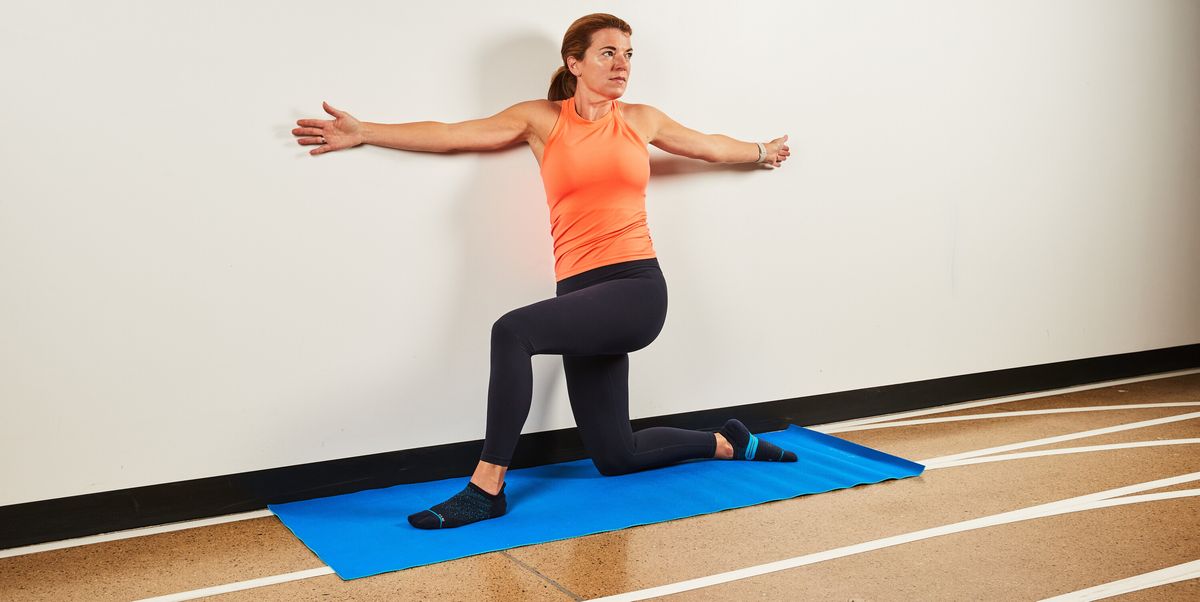Table of Contents
UNLESS YOU’RE LUCKY enough to work out for a living, you might find it challenging to try to fit your training into your day-to-day life. Balancing your job, family, other hobbies, and much-needed down-time can leave little room for exercise, depending on what you prioritize. So if you want it all—great relationships, success at work, and some size and strength—how much time do you need to schedule in for the gym?
Unfortunately, there’s no magical “hour and a half” or some other answer, says Mike Nelson, Ph.D., C.S.C.S., an associate professor at the Carrick Institute. Getting results in the gym, on the bike, on the track, or wherever else you get sweaty is less about a set period of time than it is about the work you’re able to accomplish, he says.
Shawn Arent, Ph.D., C.S.C.S., chair of the Department of Exercise Science at the University of South Carolina, agrees: “You need to be less caught up on time, and more about what you’re doing in that time,” he says.
The more quality work you can fit into your session—no matter its length—the fitter you’ll be. Here’s how you can use the time you have more wisely for more gains in fewer hours.
How You Should Actually Measure Your Workouts
“The math problem is your set [multiplied by] your reps,” rather than minutes spent in the gym, Arent says. “That’s what dictates the adaptation.”
He’s talking about your training volume: The total amount of pounds you lift across all your sets and reps for an exercise or body part. A mountain of research has shown that for both strength and size gains, increasing the volume of your workouts is the key to growth, not increasing time.
So the answer to how long your workouts need to be depends on how long you’ve been exercising to reach the volume you’re lifting now, according to Arent. To get stronger and bigger, you’ll need to do more workout volume, week over week and month over month—a concept called progressive overload.
For example, let’s say you’ve been doing dumbbell bench press three times per week. In each workout session, you’ve been doing four sets of eight reps with 50 pound dumbbells in each hand. That’s 1,600 pounds of work per session. To increase your strength and size over time, you’ll need to do that much work… or more. You could increase the amount of weight you’re lifting, or add more reps or sets (and there are reasons to choose each). But your workout needs to last long enough to increase that volume.
If you’re just looking to maintain what you’ve built for now, you may be able to do slightly less work, Arent says—around 80 percent of the volume you’ve been lifting so far. In this case, your workout may be a little shorter.
For beginners, getting more volume can take very little time, Nelson says. “If you are untrained and just starting, or if you haven’t trained in a while, you don’t need much time,” he says. In fact, some beginners do too much, he says, putting in long workouts that leave them too sore to train again in the days that follow.
For these guys, workouts as short as 15 minutes—like this 15-minute HIIT workout—can provide enough volume to progress.
“But the more advanced you get, you’re just going to have to accumulate more high-quality volume,” he says. And that will likely take more time. “There’s just no real way around it.”
How Rest Affects Your Workout Time
There’s another variable that can impact how long you’re in the gym: Rest.
When you rest between sets, Arent says, the muscles you were working replenish their stores of adenosine triphosphate. This compound, commonly known as ATP, is your muscles’ main energy currency that it uses to contract. Resting refills this gas tank so you can do another set. When it comes to strength training, research reviews have shown that for strength and size gains, a little more rest is better: Rest periods of two to three minutes between sets result in slightly more gains than rest periods of 60 seconds each.
But that doesn’t mean you have to rest that long—and double or triple your time in the gym—to be replenished on every set, Nelson says. In research studies, things need to be normalized so it can be tested: Everyone needs to rest for 60 seconds, or for 120 seconds, for example. But you’re not in a research study, so your rest periods can vary. What should determine your rest period between sets, he says, is the quality of the work you can do in the next set.
“Let’s say you’re doing dumbbell bench presses. You’re using 90-pound dumbbells, and you can do six reps,” he says. “You should rest long enough that you can get pretty close to six reps again. If can only get three reps, you probably didn’t rest enough. So now you’re compromising the amount of quality work and volume that you can do.”
Practically speaking, he says, this might mean that your rest periods get longer as your workout goes on. Between your first and second sets on an exercise, you might still be pretty fresh, and don’t need a full two- to three-minute rest to hit those six reps again. But in the later sets of your workout, you might need more rest to do the quality volume you’ll need to make gains. Adjusting your rest periods in this way can save time.
Another rest-related way to save time: Save big rest periods for big exercises, he says. While you might need several minutes of huffing and puffing to recover after a set of heavy deadlifts or squats, you probably don’t need the same amount of time to feel replenished after a set of an isolation move like triceps pushdowns.
How Long You’ll Need to Rest for Strength
“If you’re looking to maximize strength, longer rest periods are going to win. You’re probably using heavier weight, or you should be,” Arent says. When you’re lifting heavy sets of one, two, or three reps, you need to muster near-maximum levels of strength. These moves use lots of muscles, and lots of ATP (a.k.a. adenosine triphosphate, the molecules your body uses for energy). As a result, you’ll need more time to replenish the ATP your muscles need to make these big moves again. So even though your sets are shorter, Arent says, your workout is likely to be a little longer.
Another reason your workout might get longer with this type of training, Nelson says: You’ll need more sets to warm up. When they’re working up to heavy sets of one or two reps, powerlifters don’t just slap all the weight on the bar and let it rip. They do a significant amount of warm up sets. Paired with longer rest periods, this takes more time.
How Long You’ll Need to Rest for Interval Workouts
When it comes to increasing your fitness, workouts as short as four minutes have been shown to improve VO2 Max, a measure of your cardiovascular workout. Seven-minute interval cardio workouts (like this one) have been shown to be effective: In a 2013 study, participants experienced strength and endurance gains with a series of back-to-back movements that only lasted seven minutes per session. To get these kind of results, you’ll still need to increase the work you’re doing over time. Even if workouts don’t get longer, they need to increase in intensity, Arent says.
Even for high-intensity interval training (HIIT) workouts like these, “progressive overload is a real thing,” he says. “You’re going to have to continue to challenge the system, whether it’s with more weight, more reps, a combination of both of those, or more work throughout the week.”
Balance time and intensity: If you’re doing a shorter workout or shorter intervals, the work you do should be more intense. If you’re doing more or longer intervals, your workout will be longer, so you won’t be able to go all out.
4 Tips for Shorter Strength Workouts That Still Work
When life gets busy, you can still get stronger. Use these four strategies from Nelson and Arent to squeeze more volume into your resistance training minutes.
Superset Opposing Exercises
Alternating between two exercises that use opposing muscles is a classic way to do more work in less time. Performing a set of pushing exercise, like dumbbell bench, then a set of a pull like a dumbbell row, lets you work your back while your chest is recovering, and vice versa. This approach is known as a superset.
That’s because your body’s use of ATP is local, Arent says: The muscles you contract to do a move use up ATP in those specific muscles. So when you bench and use your chest and triceps, for example, the ATP used for contraction in your back and biceps isn’t used up. These types of supersets alternate pushing exercises with pulling exercises—pullups with pushups, or biceps curls with triceps pushdowns, or leg extensions with leg curls, for example.
Supersetting can result in slightly reduced performance in both exercises, Nelson says, compared to resting fully. But setting up your training in this way can reduce overall workout length while still allowing you to fit more quality volume into your session time.
Trade Isolation Moves for Large, Compound Exercises
Saving time is about prioritizing. If you’re trying to save time, Arent says, focus on the most impactful moves for your goals of getting stronger and more muscular—moves that use more muscles and joints at once, and let you move heavier weights.
That means lots of squats, deadlifts, rows, bench presses, pull ups, pushups, and other moves that use at least two joints.
Save accessory moves like biceps curls, skull crushers, and other single-joint movements for the end of your workouts. If there’s time, Arent says, you can fit them in.
Do Sets with Slightly Fewer Reps
Long sets, Arent says, take a long time: Many research studies, he says, compare longer sets with lots of reps to sets with five to eight reps. Even when the longer sets produce the same results, they take longer.
Let’s do the math: If each rep in a 15-rep set takes four seconds, the set will take one minute. But if you perform a set of eight reps with a slightly heavier weight, reps that take five seconds will still only result in a 40-second set.
That’s only 20 seconds of time saved. But if your workout has 30 sets in it, your workout will become 10 minutes shorter by making this change. Focusing on five to 10 reps per set can save you time and let you build up similar volumes, he says.
Do Some Aerobic Training When You’re Not Lifting
This might sounds counterintuitive—aerobic cardio training takes time, which you’re trying to save—but by building your aerobic base, Nelson says, your strength workouts may be shorter … because you won’t need to rest as long between sets to recover.
“If you look at someone who has a horrible aerobic capacity, they’re going to be limited by just how much volume they can do in the gym because they can’t recover,” he says. Better aerobic fitness means faster recovery, which means more volume.
Nelson’s suggestion: Do your best to move for an hour each day, five days per week, whether it’s lifting or cardio. If you lift on Monday, Wednesday, and Friday, for example, try to do some brisk walking or other cardio work for 30 to 60 minutes on Tuesday and Thursday. Over time, this may mean you can do more work—and make more gains—on your lifting days without increasing the time spent in the gym.

Greg Presto is a fitness and sports reporter and videographer in Washington, DC.





